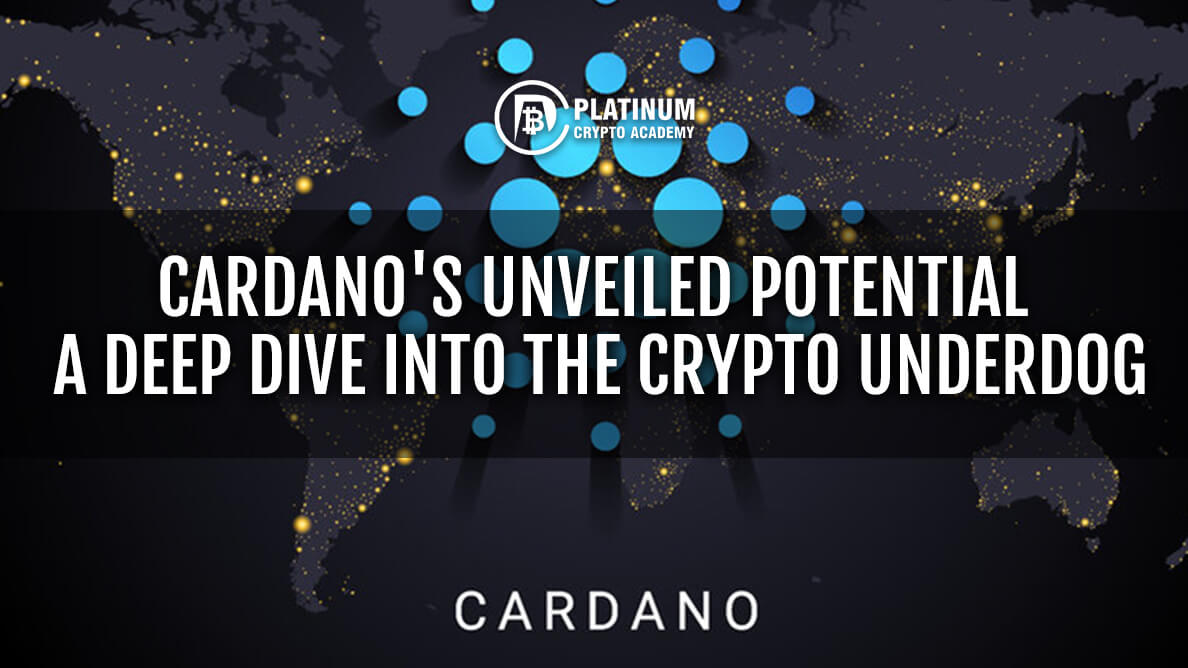Quick Links
The spotlight often shines on the behemoths like Bitcoin and Ethereum, leaving other potent contenders like Cardano (ADA) in the shadows. However, the tides of change are subtle yet steady, and Cardano is a testament to this shift. This blockchain platform, founded by Ethereum co-founder Charles Hoskinson, has been quietly brewing a storm, ready to challenge the status quo.
The Genesis – A Scholarly Pursuit
Cardano’s inception is rooted in a scholarly approach, a stark contrast to many of its counterparts. Its foundation is laid on rigorous peer-reviewed research, aiming to address the limitations faced by earlier blockchain systems. This meticulous approach has birthed a unique two-layer architecture comprising the Cardano Settlement Layer (CSL) for transactions and the Cardano Computational Layer (CCL) for smart contract operations. This design promises a secure, scalable, and sustainable platform, a trifecta rarely achieved in the blockchain realm.In a realm where rapid innovation often takes precedence over meticulous scrutiny, Cardano’s inception stands as a beacon of thorough academic inquiry. The birth of Cardano wasn’t a hurried affair; it was a deliberate endeavour aimed at addressing the inherent shortcomings of earlier blockchain systems. Spearheaded by one of the co-founders of Ethereum, Charles Hoskinson, Cardano emerged from a desire to elevate the blockchain infrastructure to a level where it could seamlessly and sustainably interact with global systems.
The foundation of Cardano is unique; it’s built on a bedrock of peer-reviewed research. Unlike many of its contemporaries, every protocol upgrade and technological implementation within Cardano undergoes rigorous scrutiny by a community of academics and scientists. This scholarly approach ensures that the technology is not only sound but also capable of addressing real-world challenges in a sustainable manner.Cardano’s architecture is a testament to its scholarly roots. The platform is designed with a unique two-layer structure, separating the settlement layer from the computational layer. The Cardano Settlement Layer (CSL) is dedicated to handling transactions, ensuring seamless and secure transfers of its native token, ADA. On the other hand, the Cardano Computational Layer (CCL) is engineered to facilitate smart contract operations, providing a robust environment for developers to create decentralized applications (dApps) with a high degree of security and scalability.
This bifurcation allows for a level of flexibility and efficiency rarely seen in the blockchain space. It addresses the often-conflicting demands of scalability, security, and sustainability, a triad of challenges that has long plagued the blockchain realm.Furthermore, Cardano’s emphasis on a community-driven approach to governance and development reflects its commitment to creating a decentralized and democratic ecosystem. The platform’s governance model encourages active participation from its community, ensuring that the evolution of Cardano is in line with the needs and desires of its users.
The meticulous attention to detail, the emphasis on peer-reviewed research, and the innovative architectural design place Cardano in a league of its own. It’s a blockchain platform that doesn’t just chase after the trends but aims to set new standards, driven by a scholarly pursuit of excellence and a vision to create a more inclusive and sustainable global financial system.
The Investment Landscape – ADA’s Promise
Investing in cryptocurrencies is often akin to riding turbulent waves, thrilling yet fraught with risks. However, Cardano’s native token, ADA, presents a compelling narrative for investors. Its price action has shown resilience amidst market adversities, and its underlying technology holds a promise of long-term value. The recent implementation of smart contracts through the Alonzo upgrade has further bolstered ADA’s position in the market, opening doors to a plethora of decentralized applications (dApps).

Ethereum vs Cardano – A Tale of Two Giants
Among the most captivating tales is the evolving dynamic between Ethereum and Cardano, two behemoths with distinct visions and technical frameworks. As they stride along the path of blockchain evolution, the contrasts, and comparisons between them paint a vivid picture of the potential future of decentralized technologies.
Ethereum, as a trailblazer, brought smart contracts and decentralized applications (dApps) into the limelight, creating a bustling ecosystem that has become synonymous with DeFi (Decentralized Finance). Its philosophy is rooted in enabling developers to build a wide array of applications on its platform, fostering a culture of innovation and rapid development.Cardano, on the other hand, takes a more measured approach. Its foundation is laid on rigorous academic research, aiming to address the core challenges of scalability, sustainability, and interoperability that have long plagued the blockchain space. Cardano’s philosophy is about creating a balanced ecosystem that melds innovation with sustainability.
Ethereum operates on a Proof of Work (PoW) consensus mechanism, which, while secure, has been criticized for its energy inefficiency and scalability issues. The much-anticipated upgrade to Ethereum 2.0, transitioning to a Proof of Stake (PoS) mechanism, aims to address these concerns, but it’s a monumental shift that is still in the works.Cardano, conversely, was designed with a Proof of Stake (PoS) consensus mechanism called Ouroboros from the outset. This design choice reflects a forward-thinking approach to energy efficiency and scalability, allowing for quicker transaction validations with lower energy consumption.Ethereum’s smart contract capabilities are well-established, with a vast array of dApps spanning various sectors. However, the high gas fees and slower transaction speeds have been a point of contention, often hindering smaller transactions and dApp interactions.
Cardano recently launched its smart contract capabilities with the Alonzo upgrade, stepping into the realm of decentralized applications. While it’s a newer entrant in the dApp space, the promise of lower transaction fees and a more scalable infrastructure positions Cardano as a strong contender for future decentralized development.
Investment Potential
From an investment standpoint, both Ethereum and Cardano present intriguing opportunities. Ethereum, with its established ecosystem, offers a level of assurance, while Cardano, with its recent upgrades and potential for growth, presents a compelling case for long-term value appreciation.
Cardano’s journey has been a silent surge, steadily gaining momentum in the backdrop of crypto giants. Its community-driven approach, coupled with a strong foundation of research and a vision for a decentralized and sustainable blockchain, has garnered a loyal following. The roadmap ahead, filled with upgrades and partnerships, hints at a promising trajectory, making Cardano a potential dark horse in the blockchain race.
The crypto community stands at a crossroad, with the path leading towards established yet congested realms or towards uncharted yet promising territories like Cardano. The tale of Cardano is a harmonic tune in the crypto symphony, resonating with the ethos of innovation, sustainability, and community-centric development. As the curtains of uncertainty slowly draw away, the silhouette of Cardano emerges, not as an underdog, but as a potential titan in the blockchain saga.The tale of Ethereum and Cardano reflects the broader evolutionary narrative within the blockchain space. It’s a tale of two giants, each with its own set of strengths, challenges, and visions for the future. As they continue to evolve and adapt, the dynamic interplay between Ethereum and Cardano will undoubtedly continue to captivate the crypto community, offering glimpses into the potential trajectories of blockchain technology.
Hopefully, you have enjoyed today’s article. Thanks for reading! Have a fantastic day! Live from the Platinum Crypto Trading Floor.
Earnings Disclaimer: The information you’ll find in this article is for educational purpose only. We make no promise or guarantee of income or earnings. You have to do some work, use your best judgement and perform due diligence before using the information in this article. Your success is still up to you. Nothing in this article is intended to be professional, legal, financial and/or accounting advice. Always seek competent advice from professionals in these matters. If you break the city or other local laws, we will not be held liable for any damages you incur.


